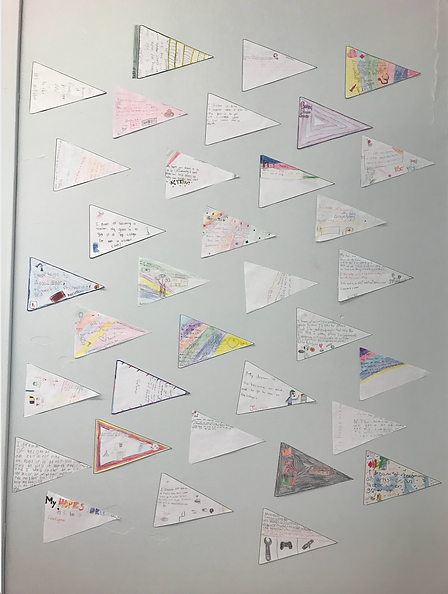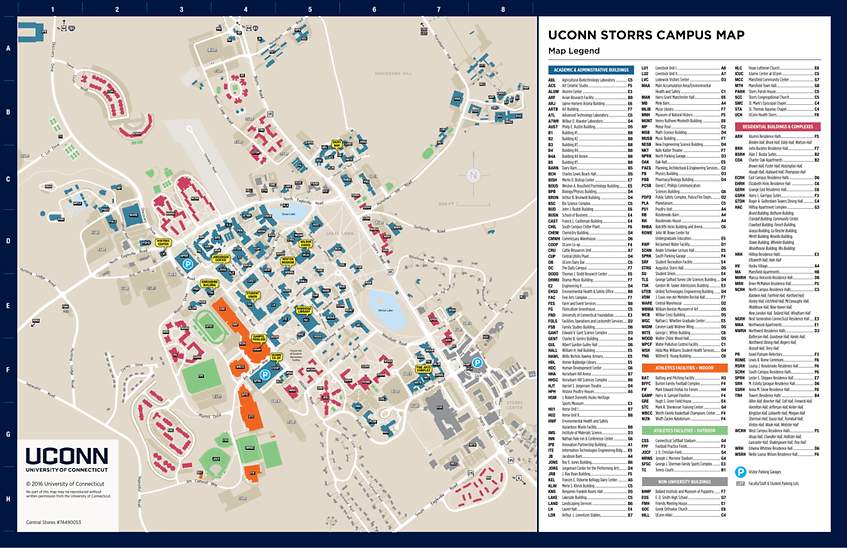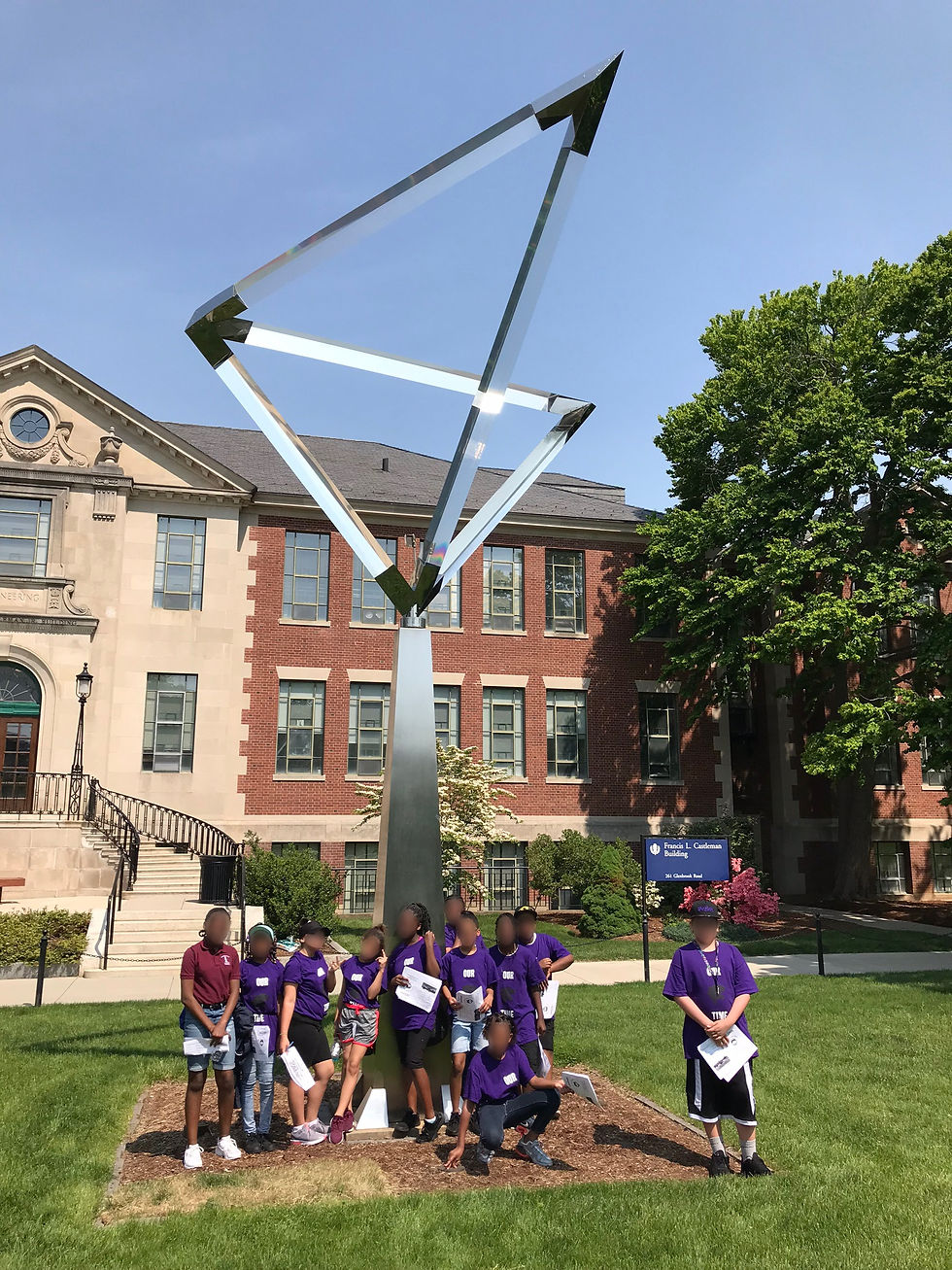College Visit
Introduction
At Achievement First, our students are taught about college early on. In fact, as early as kindergarten they are referred to by their college graduation date. Along with this, students are continually reinforced about their "climb to college" and being "college-ready". For this reason, it was important for me to create an experience where my students were able to see themselves and explore a possible option for post-secondary education. In order to provide access to students, I choose to facilitate a trip to the University of Connecticut.
The University of Connecticut is located in Eastern Connecticut in a small town called Storrs. As the largest public university in the state, there are over 30,000 undergraduate students - twice the student population of the University of Rhode Island. From my research, it became apparent that with a larger student body came with greater opportunity. The University of Connecticut has a world-renowned woman's basketball team - frequently placing second nationally as well as over 100 undergraduate majors. Some of their most notable majors include Animal Science, Psychology, Business, Engineering, and Nursing. From this, a trip to the University of Connecticut offers students access to an out-of-state experience that demonstrates to students the effect of educational policies, a number of possible career paths, and a glimpse of what college living looked like.

Planning the Trip
Since this trip had not happened, I needed to coordinate with the University of Connecticut as while as my Director of School operations to coordinate the trip. From multiple emails and meetings with both parties, it was agreed that the best time for students to go on this trip during the last week of school.
From these conversations, a schedule was created. Students would leave school at 8:00 AM and travel to the University of Connecticut. The tour began at the University Bookstore where teachers and students were set into groups and given a scavenger hunt. This type of tour was intentional to give students the autonomy to explore college campuses authentically. For this reason, some students began their tour in the Gampel Pavilion and others the Student Union. In addition to these locations, students had the opportunity to explore the School of Engineering, Homer Library, Thomas J. Dodd Research Center, Dining Halls, and the Dairy Bar.
As part of planning the trip, I created the permission slip for families and a presentation to disseminate information to students about our trip. Each of these pieces of evidence are shown below to demonstrate materials used during my planning and presentation process.
Student Pre-Work
Before embarking on this trip, students completed research on various colleges to create a college pennant. Students completed this pre-work in two different sessions. Before spending time researching colleges, students named colleges they were familiar with to highlight common trends. Many students were familiar with their local colleges, including Brown University, Providence College, and the University of Rhode Island. From this, I was able to introduce new colleges such as Howard University, Northeastern University, and the University of Connecticut. Each of these colleges demonstrated to students unique attributes that different colleges have to offer. In particular, we spent more time discussing Historically Black Colleges and Universities, "Little Ivys," and state colleges. From this brainstorm session, students were given time to explore colleges independently. They chose the name of a college from a hat and completed an independent research worksheet on it. Shown below is a screenshot of one website a student used to conduct their independent research.



In the piece of the evidence above, students created individual college pennants after completing research and learning more about different college options. This experience allowed students to make a personal connection to college before our visit which increased their excitement and investment in our trip.
Evidence
As part of our trip, students completed a campus scavenger hunt to visit as many buildings as possible while meeting various campus representatives along the way. Immediately upon arrival students were broken into 5 groups each with a teacher. Along this tour, we visited the Dairy Barn, Student Union, Rowe Center of Education, and Gampel Pavilion where the national women's basketball team plays. The teachers established a group chat to send group pictures to with the goal of finding all locations first. Throughout the tour students were encouraged to talk to campus staff and representatives to learn as much as possible. Pictured below are images of students in front of different buildings to demonstrate their findings.

The piece of evidence above is a replicate of the campus map students were given to navigate their campus tour. This was a good opportunity for them to learn how to use a map and develop their teamwork when discovering a new area.








In the piece of the evidence above, students are featured in front of some of the stops on their campus tour. Many students were overwhelmed by the size of the campus. Each time they discovered a new building they immediately asked its purpose. Many students learned that most subjects were categorized by departments which had their own building in which students from that major took most of their classes.
Student Reflection
After our trip to UCONN, I administered a post-visit survey to the 11 students in my group. The purpose of this reflection was to see what students thought, learned, and took away from the experience. As seen in the evidence below, 73% of students rated their experience as a 5 out 5 for enjoying the experience. It was powerful to see that no student ranked the trip less than a 4 out of 5 which identifies that students enjoyed the trip. Additionally, around 80% of students stated they would like to apply to UCONN for a number of reasons (all highlighted below). The fact that 100% of students wanted to visit more colleges demonstrated the correlation of Achievement First's "climb to college" and this visit's ability to invest students. Following this trip, students were much more interested in their grades and how to improve them by the end of the year. This came from students' ability to calculate their own GPA while on the trip and analysis their ability to apply to UCONN currently.




Conclusion
In middle school, it may seem premature to educate students on college. At Achievement First, it is impossible to discuss college too early. Students are learning about college from the age of 5. As teachers, we ground our feedback in an idea of being "college-ready" meaning look, act, and succeed in the same manner a college student would. At a transitional point of middle school, it is critical to bring this idea to reality. Knowing that my students had visited the University of Rhode Island, I found a new opportunity of access in an out-of-state university such as the University of Connecticut. From this experience, my students were able to observe another view on public education and it's offerings. My students learned more about the college experience with high profile sports, rigorous academics, and research. Each of these findings has enlightened my students to identify a new piece of themselves.